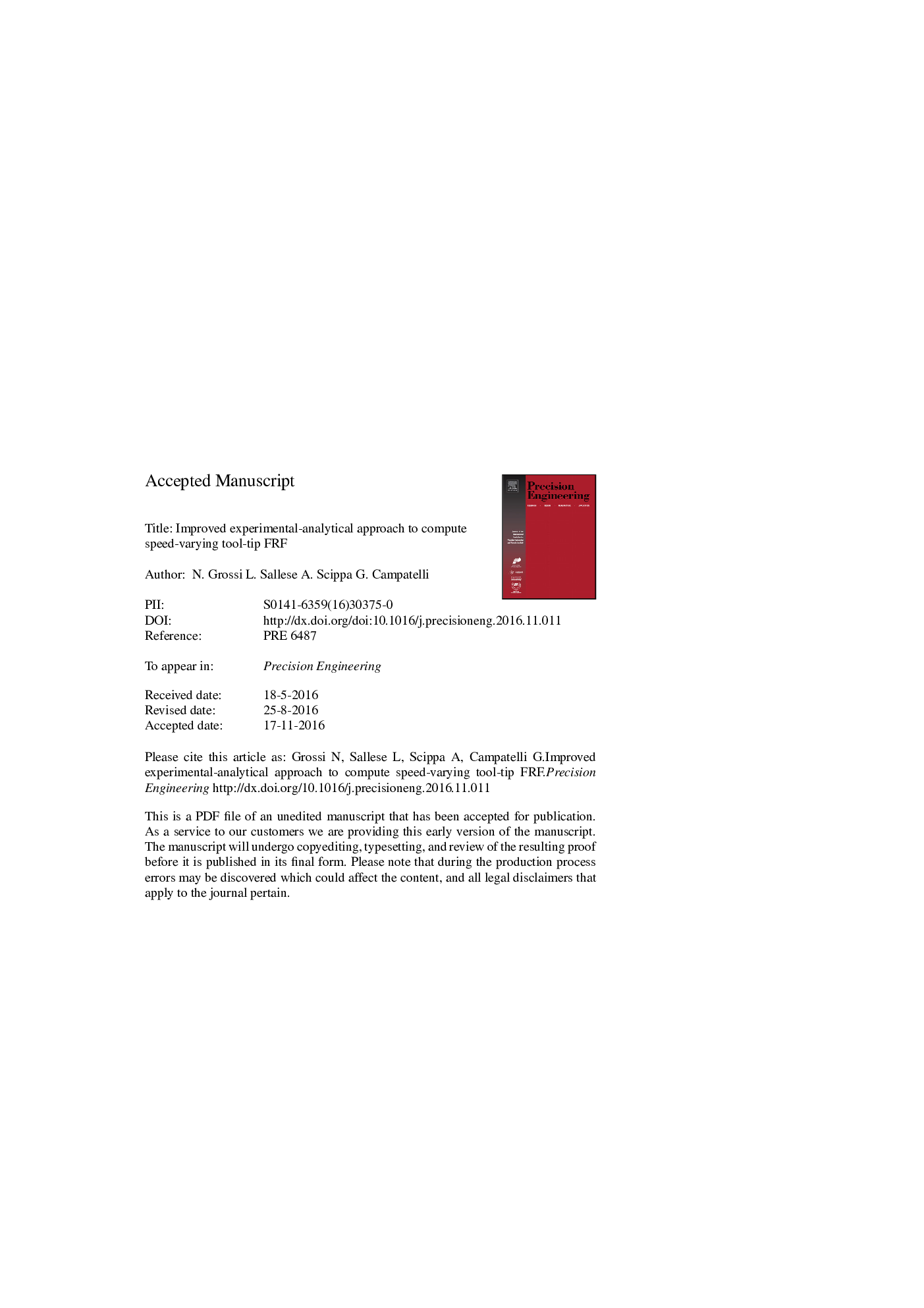| Article ID | Journal | Published Year | Pages | File Type |
|---|---|---|---|---|
| 5019141 | Precision Engineering | 2017 | 15 Pages |
Abstract
Chatter stability prediction is crucial to improve the performances of modern milling process, and it gets even more important at high speeds, for which very productive cutting parameters can be achieved if the suitable spindle speed is selected. Unfortunately, the available chatter predictive models suffer from reduced accuracy at high speed due to inaccuracies in the input data, especially the machine tool dynamics that is acquired in stationary configurations but could sensibly change with spindle speed. In this paper, an efficient method to identify the speed-varying Frequency Response Functions (FRFs) under operational conditions is presented. The proposed approach is based on the definition of some experimental chatter limits (i.e., chatter frequency and related depth of cut), obtained by a dedicated test, called Spindle Speed Ramp-up. The experimental results are then combined with the analytical stability solution. By minimizing the differences between the experimental and predicted chatter conditions, a dedicated algorithm computes the speed-varying FRFs. Few tests and simple equipment (i.e., microphone) are enough to calculate the FRFs in a wide range of spindle speeds. The proposed technique was validated in real machining applications, the identified tool-tip FRFs are in accordance with expected trend reported in scientific literature. Speed-varying stability lobe diagram reconstructed with the computed FRFs is proven to be accurate in predicting stable cutting parameters.
Related Topics
Physical Sciences and Engineering
Engineering
Industrial and Manufacturing Engineering
Authors
N. Grossi, L. Sallese, A. Scippa, G. Campatelli,
